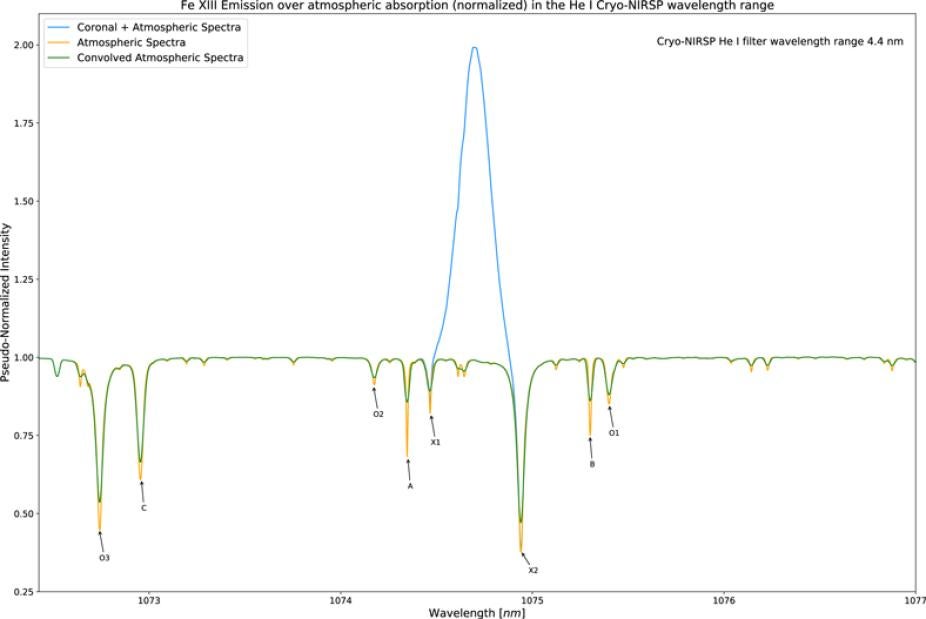Publication: The Astrophysical Journal; Authors: Aatiya Ali, Alin Razvan Paraschiv, Kevin Reardon, and Philip Judge
The infrared solar spectrum contains a wealth of physical data about the Sun and is being explored using modern detectors and technology with new ground-based solar telescopes. One such instrument will be the ground-based Cryogenic Near-IR Spectro-Polarimeter of the Daniel K. Inouye Solar Telescope (DKIST), which will be capable of sensitive imaging of the faint infrared solar coronal spectra with full Stokes polarization states. Highly ionized emission lines have been observed in galaxies and the solar corona. Quantifying the accuracy of spectral inversion procedures requires a precise spectroscopic calibration of observations. A careful interpretation of the spectra around prominent magnetic dipole lines is essential for deriving physical parameters and particularly for quantifying the off-limb solar coronal observations from DKIST. In this work, we aim to provide an analysis of the spectral regions around the infrared coronal emission lines of Fe xiii 1074.68 nm, Fe xiii 1079.79 nm, Si x 1430.10 nm, and Si ix 3934.34 nm, aligning with the goal of identifying solar photospheric and telluric lines that will help facilitate production of reliable inversions and data products from four sets of solar coronal observations.

Fe XIII 1074.68 nm emission over atmospheric absorption (normalized) in the He I Cryo-NIRSP wavelength range with all labeled candidate lines. The green curve represents the atmospheric spectra that are convolved with a Gaussian function correspondent to the Cryo-NIRSP 0"5 slit spectral resolution of 0.027 nm.